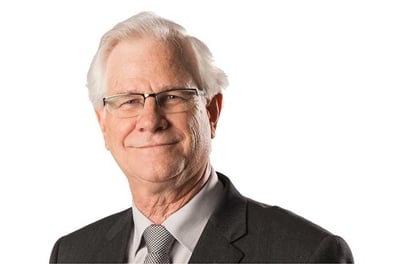Mind of Jacka: What Time Is It?
Blogs Mike Jacka, CIA, CPA, CPCU, CLU Jun 15, 2023

Here is one of my favorite Disneyland stories.
The park was getting complaints that the clock on the Main Street Station tower showed the incorrect time. The maintenance department was dispatched to correct the problem, but the complaints continued. Time after time (you’ll excuse the pun) maintenance went to the tower and reset the clock, only to continue receiving complaints that the time was incorrect. An investigation began.
Management followed maintenance to watch the process first-hand. “Before I go up to reset the clock,” the clock-setter said, “I call the park operator to make sure my watch is right.” (That part of the story gives you an idea how old the story is.) He made the call, checked his watch, climbed the tower, and set the clock. Everything seemed in order until a guest commented that the clock was wrong.
Management then went at it a different way and sat with the operator. When maintenance called asking for the correct time, the operator looked out the window and read the time off the clock on the tower at Main Street Station.
My primary reason for sharing this is that it is a great story about Disneyland. But there are also some basic messages to all internal auditors about how we gather and trust data.
The most obvious lesson is that, when our clients provide information, we must take the extra step of verifying the sources of that data. Even when there is no intent to deceive, clients can mislead us (at the same time they are misleading themselves.) Two-source verification is never a bad idea.
The Disney story also reminds me of an old joke: What is a consultant? Someone who tells you what time it is by reading your watch.
This brings up a second lesson: How often are we telling clients what they already know? How often are we just reporting the problems that they already understand, sometimes more fully than we do? How often are we looking at the clock to tell them what time it is? Mind you, there are times we need to tell management/executives/leaders what is already known at the lower levels. Too often, the people doing the work know what is wrong, but the ones “in charge” won’t listen or don’t want to hear. In that case, we do need to read their watches for them, because they refuse to look.
Finally, this is a reminder that we need to be absolutely sure where we are getting our data — what we are willing to accept. You’ve probably heard the term catfishing. It means the luring of someone into a relationship by means of a fictional online persona. It may sound unlikely, improbable, and darn near impossible, but it is a widespread phenomenon that was first brought to the broader public’s attention by the outstanding 2010 movie Catfish and the subsequent television series.
You don’t believe it can happen? Watch the movie. And then, based on how much you can tolerate, check out the series. (My wife is addicted. I don’t know what that says about her or our relationship, but let’s just keep moving.) To this day, there are still enough people faking personas and others willing to believe those fake personas to keep the television show running since 2012.
What do fake personas luring people into relationships have to do with internal audit? As our work is increasingly conducted in a remote environment, we rely more and more on technology. And that means we are forced into virtual relationships with our clients. And those virtual relationships should raise questions about everything we see, hear, and read.
How do you know the data is from an actual source? How do you know these are the reports that were actually delivered? How do you know those numbers are real? How do you know any documentation you receive actually exists? How do you even know you are talking to the person you think you are talking with? How can we believe anything that comes from a virtual relationship?
Don’t worry, I’m not advocating living in a distrustful environment. But it does mean we have to be careful what we accept as reality. And it means, once again, double-checking sources, data, and even the individuals with whom we are working.
Our profession has always been based on the accuracy of the information we receive. And it means we have to be sure that information is correct. However, new times require new verification. We want to make sure we aren’t resetting the clock to the same time the clock already shows.


